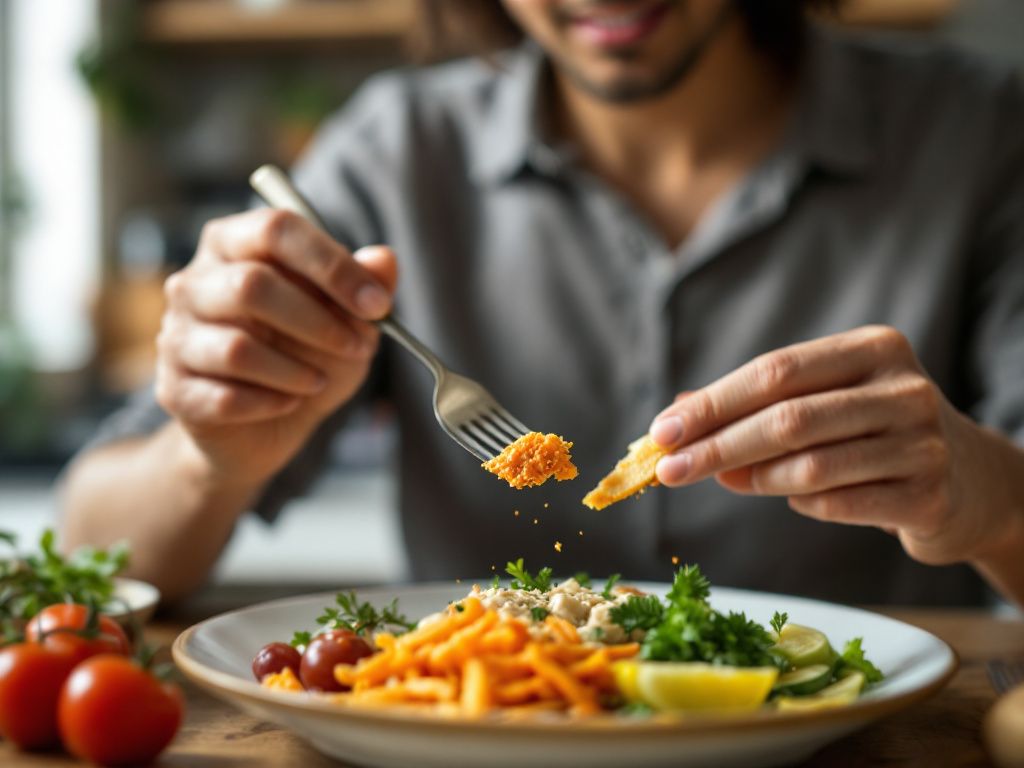Alright folks, let’s talk skin. You know, that stretchy bit holding us all together. It’s our first line of defense, a reflection of everything happening inside, and well, to be honest, keeping it radiant feels kind of like a never-ending mission. We’ve all had those days when it seems no matter what you smear, scrub, or cleanse, your skin just isn’t responding. It’s flat-out exhausting, right? Like, who’s got hours to spare for a fifteen-step routine? Spoiler alert: not me. But here’s a thought that might not have crossed your mind—maybe it’s not about what you put on your skin, but about what you’re lacking on the inside. Curious yet? Good, because there’s a silent powerhouse sneaking into this conversation: selenium.
Table of Contents
ToggleThe Skin-Selenium Connection
Does selenium benefit your skin health? Absolutely. This nutrient might not get top billing the way vitamin C and collagen do in those glossy beauty ads, but it’s practically a hero in the nutrient focus zone. Selenium is an essential trace mineral that, in simple terms, helps protect your cells from oxidative stress and maintains skin health. Think of selenium like a little bouncer—it keeps rogue molecules (yes, I’m looking at you, free radicals) from creating chaos in your cells.
Now, if you’re not getting enough, your skin might look dull and dry, or even worse, it might leave the door open for early aging. And trust me, no one wants skin that calls out their age like a vintage vinyl. So, what’s the plan? It’s all about upping that selenium intake through certain foods.
Setting the Stage: Selenium Intake 101
Before we jump into our grocery list, let’s chat quickly about selenium’s supporting role in your overall health:
- Promotes Skin Elasticity: Selenium benefits include aiding in maintaining your skin’s elasticity and firmness. It’s like giving your skin a daily little bounce.
- Fights Against UV Damage: It helps your skin shield against the damage from those rays everyone loves soaking up on their favorite beach chairs.
- Boosts Immune Function: By supporting your immune system, selenium indirectly plays a role in your skin staying healthy and clear.
How Much Selenium Is Enough?

The right amount is crucial (more isn’t always better), so let’s get specific. The recommended dietary allowance (RDA) for selenium is about 55 micrograms a day for adults. You can hit that with foods you already love; no science lab concoctions required.
Selenium Showdown: Foods Rich and Raring
Alright, let’s cut the chatter and dive into the star attractions of this nutrient-packed show. Here’s your backstage pass to some top-notch selenium-rich foods.
- Brazil Nuts
Have you ever noticed those big ole nuts in a mixed variety and just skipped over them? Stop right there. Brazil nuts aren’t just tasty—these things are havens of selenium. One to two of these beauties a day can cover your daily needs. Just be mindful, because they’re easy to over-indulge in—too much selenium can tip the scales the wrong way.
- Fish Like Tuna, Halibut, and Sardines
Think of pungent seafood dinners and happiness might not be the first thing coming to mind. But think again! Selenium-rich seafood like tuna and sardines can boost your intake significantly. Added bonus: these fish are high in omega-3 fatty acids as well, which we love for whole-body wellness. So, next time you feel peckish by the sea, give it a try!

- Turkey and Chicken
Turkey isn’t just for Thanksgiving. Skip that triptophan comment, this bird—along with chicken—is fine selenium fare for everyday meals. It’s easily accessible and can be a simple addition to lunch or dinner, without fancy schedules.
- Whole Grains and Cereals
Whole grains aren’t just about fiber, folks. They pave the way for more selenium in your diet too! Bring home some good old oats or whole wheat bread, and you’re good to go—easy peasy!
- 5. **Eggs
Eggs keep turning up in nutrition conversations because they’re so versatile. Count selenium among their superpowers. Boiled, scrambled, poached—any style suits the purpose perfectly.
Building Your Plate: A Day with Selenium
Crafting a menu packed with selenium benefits doesn’t require magic or drastic changes to your diet, trust me. It’s about mindful additions and swaps. Here’s an easy-peasy example of an eating plan to slip in some selenium:

- Breakfast: Scramble up an omelet using two eggs, flanked with wholegrain toast.
- Lunch: Serve up a chicken salad, heavy on leafy greens and colorful veggies. Sneak in sunflower seeds—that’s a good punch of selenium.
- Dinner: Go coastal with a tuna steak paired with a quinoa side. Toss on some asparagus and your day’s selenium is ticked off with a golden star.
By the way, you can easily embrace dairy or non-gluten based options based on dietary needs; selenium can fit everyone’s plate, no exclusions.
A Little Goes a Long Way
All this talk might have you racing to fill that cart, but put those brakes on for just a second. Selenium is one of those things where balance is crucial. Going way overboard won’t bring extra benefits. On the contrary, it can lead to issues—we’re talking hair loss, nail disfiguration, or upset stomach—a checklist we’re not going for the win on.
So, the takeaway here is a conscious series of small changes can do serious good for your skin and overall health. Selenium, when coupled with a balanced diet rich in color, variety, and love, can work wonders.
The Wrap-Up
Hey, as someone kind of excited about foods and nutrients, let me be real with you—you don’t need a science degree or a vast budget to keep your skin lovely. With minerals like selenium leading the charge, you’re stepping toward having glowing skin and contributing to feeling like your best self day in and day out, no all-nighters required. Give some of these selenium-rich foods a shot. You’ll snack your way to better skin in no time. Just think about it!
Feel free to come back to this guide whenever you need that refresh—consider it a friendly nudge in the whole nutritional conversation. Here’s to celebrating each bite that goes toward vibrant, radiant skin! Cheers!
Frequently Asked Questions
What are the primary benefits of selenium for the body?
Selenium is an essential mineral that offers several key benefits. It acts as a powerful antioxidant, protecting cells from damage caused by oxidative stress, which is linked to chronic conditions such as heart disease, cancer, and neurodegenerative diseases like Alzheimer’s and Parkinson’s. Selenium also supports thyroid health by helping regulate thyroid hormones, and it plays a crucial role in immune system function and DNA synthesis[1][3][5).
What foods are rich in selenium?
Selenium can be obtained from various foods. Good sources include lean meats like chicken and beef, seafood, eggs, pasta, rice, oatmeal, and baked beans. Notably, a single Brazil nut can provide up to 91 micrograms of selenium, fulfilling the daily recommended intake. Organ meats and seafood, such as yellowfin tuna and shrimp, are also high in selenium[1][5][3).
What are the symptoms and risks of selenium deficiency?
Selenium deficiency is rare in healthy individuals but can occur in people with certain health conditions like HIV or Crohn’s disease, or those receiving IV nutrition. Symptoms of selenium deficiency include headache, nausea, confusion, fatigue, and in severe cases, seizures and coma. Deficiency can also lead to conditions such as Keshan disease (a type of heart disease) and Kashin-Beck disease (a type of arthritis)[1][3][5).
What are the risks of selenium toxicity?
Selenium toxicity can occur from consuming too much selenium, particularly through supplements. Signs of toxicity include hair loss, dizziness, nausea, vomiting, facial flushing, tremors, and muscle soreness. High levels of selenium can lead to serious health issues such as breathing problems, kidney failure, and heart problems, and in extreme cases, can be fatal[1][3][5]).
References







